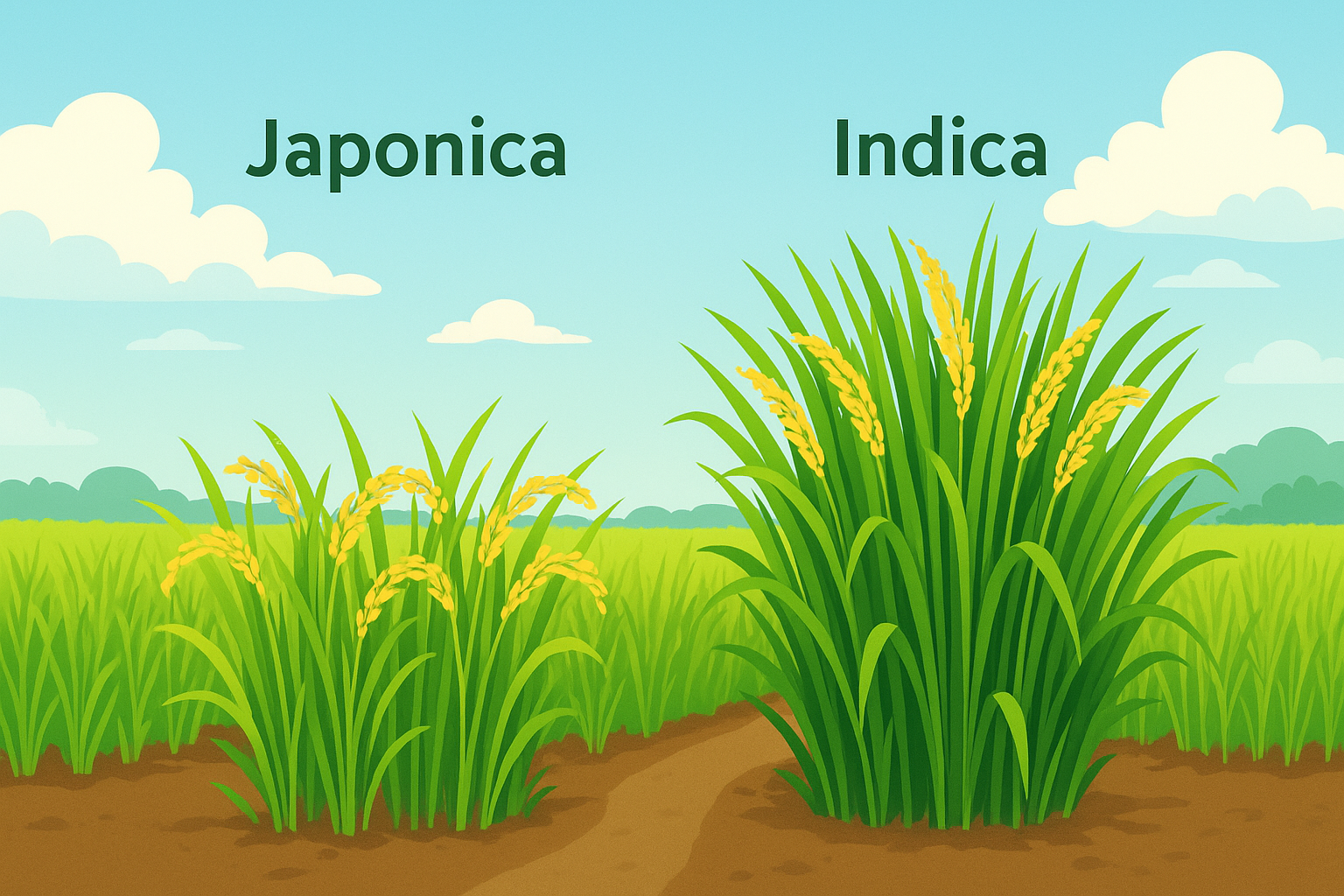Highlights
- Researchers identified natural genetic variations in the OsNLP4 gene that explain why indica rice uses nitrogen more efficiently than japonica.
- Introducing the indica version of OsNLP4 into elite japonica cultivars boosted grain yields by 12–25% in field trials.
- The gene enhances the plant’s ability to bind nitrate response elements, activating nitrogen and iron metabolism pathways.
- Combining OsNLP4 with balanced nitrogen–iron fertilizers increased nitrogen use efficiency (NUE) by 30–32%.
- Findings provide a strategy to improve rice productivity and sustainability worldwide.
TLDR
A study led by Jie Wu, Ying Song, Guangyu Wan, and colleagues discovered that genetic variations in the OsNLP4 gene give indica rice superior nitrogen use efficiency. By transferring this gene into japonica rice, researchers boosted yields and reduced fertilizer needs, offering a path to more sustainable farming.
The Fertilizer Dilemma in Rice Farming
Rice feeds more than half of the world’s population. Yet modern rice farming depends heavily on nitrogen fertilizers, which drive up costs for farmers and cause serious environmental problems—from greenhouse gas emissions to polluted waterways.
Worse, much of this fertilizer is wasted. On average, rice plants absorb less than 40% of applied nitrogen, with the rest leaching into the environment. Improving nitrogen use efficiency (NUE) has become a top priority for global food security and sustainable agriculture.
Why Indica Outperforms Japonica
There are two main subspecies of cultivated rice: indica and japonica. While japonica is prized for its quality and stability in temperate regions, it suffers from chronically low NUE. In contrast, indica varieties, common in tropical regions, are far more efficient at converting nitrogen into grain yield.
In this new study published in Nature Communications, Jie Wu, Ying Song, Guangyu Wan, Liangqi Sun, Jingxian Wang, Hongkai Wu, Shimei Wang, Chuanzao Mao, Peng Qin, Shigui Li, Chengcai Chu, and Chengbin Xiang identified a major reason for this difference: natural genetic variations in the OsNLP4 gene.
The Supercharged OsNLP4 Gene
OsNLP4 belongs to the family of NIN-like proteins, which regulate nitrogen metabolism in plants. The researchers found that three single-nucleotide polymorphisms (SNPs) in the indica version of OsNLP4 give it stronger binding power to nitrate response elements (NREs) in DNA.
This tighter binding boosts the activity of genes that control nitrogen uptake, metabolism, and even iron balance, which is essential for plant growth. As a result, plants carrying OsNLP4 from indica can absorb more nitrogen, grow more tillers, and produce bigger panicles of grain.
Field Trials Show Big Gains
To test the impact, the team bred japonica rice with OsNLP4 from indica. Across multiple large-scale field trials in China, these modified japonica lines achieved:
- 12–25% higher yields, depending on location and nitrogen availability.
- Significant increases in NUE, meaning more grain produced with less fertilizer.
- Better resilience under both low and high nitrogen conditions.
Even more impressive, when paired with balanced nitrogen–iron fertilizers, yields rose by nearly one-third.
Beyond Rice: Cross-Species Potential
The study also tested OsNLP4 in the model plant Arabidopsis, a dicot species. The gene still worked—boosting shoot biomass by 23%—suggesting its potential use in other staple crops like wheat, maize, or soybeans.
This positions OsNLP4 as a cross-species genetic resource for enhancing productivity and sustainability far beyond rice.
Why This Matters
This discovery addresses two urgent global challenges at once:
- Feeding a growing population by improving crop yields.
- Protecting the environment by reducing fertilizer overuse.
By incorporating OsNLP4 into breeding programs, scientists can help farmers grow more food with fewer inputs. That translates to lower costs, cleaner water, and reduced climate impacts.
Source: Wu, J., Song, Y., Wan, G., Sun, L., Wang, J., Wu, H., Wang, S., Mao, C., Qin, P., Li, S., Chu, C. & Xiang, C. (2025). Nature variations of OsNLP4 responsible for nitrogen use efficiency divergence in the two rice subspecies. Nature Communications. https://doi.org/10.1038/s41467-025-63109-7

